

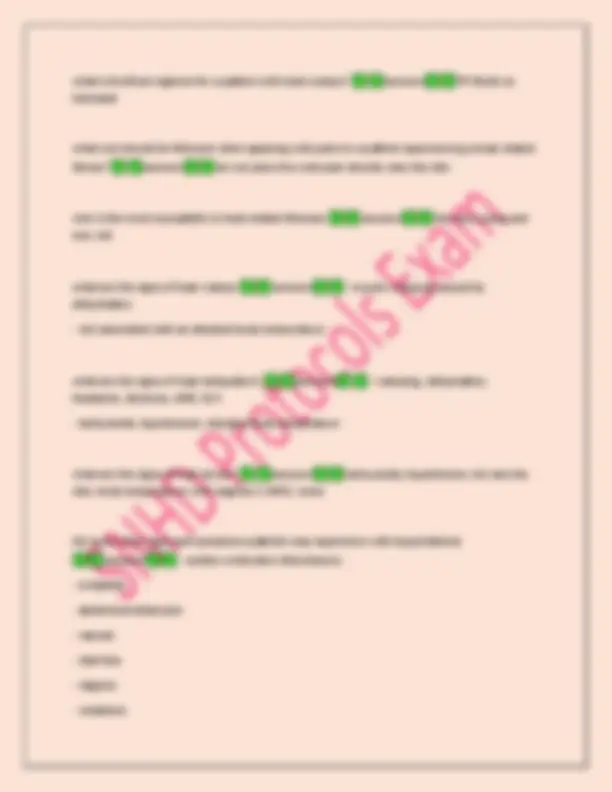

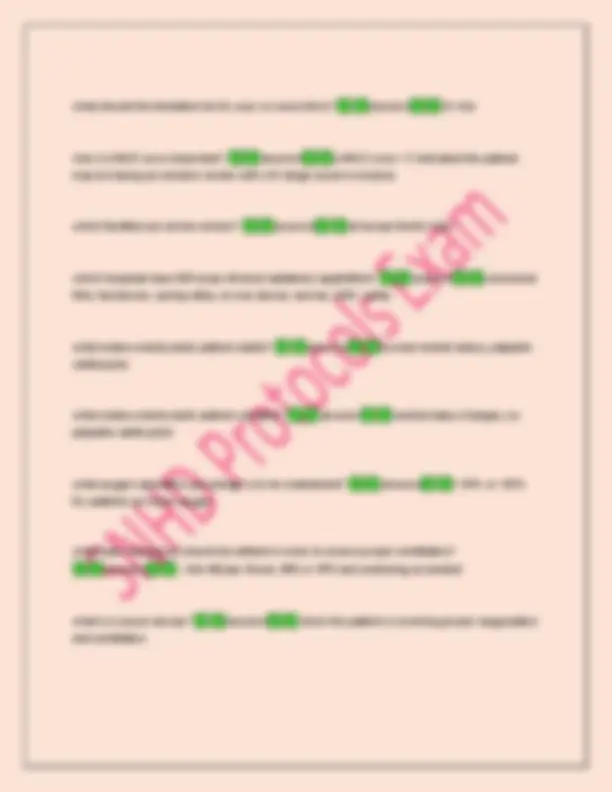
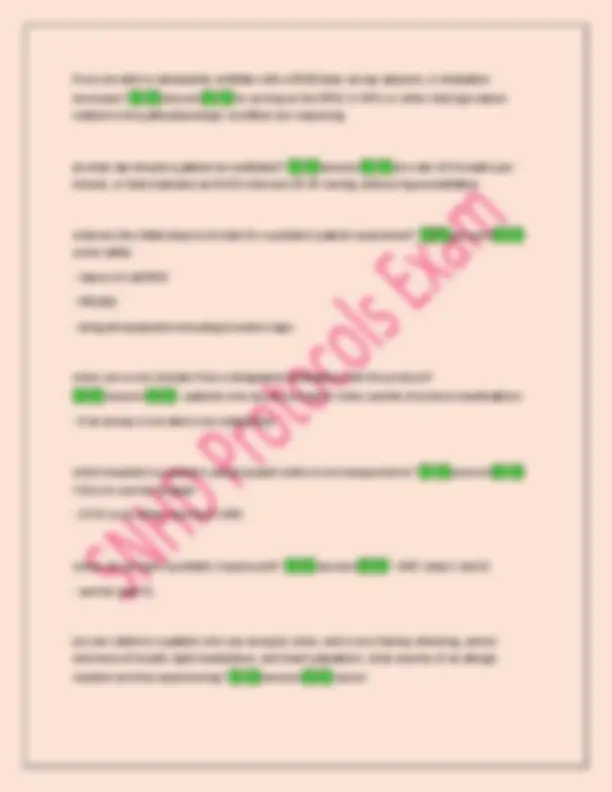
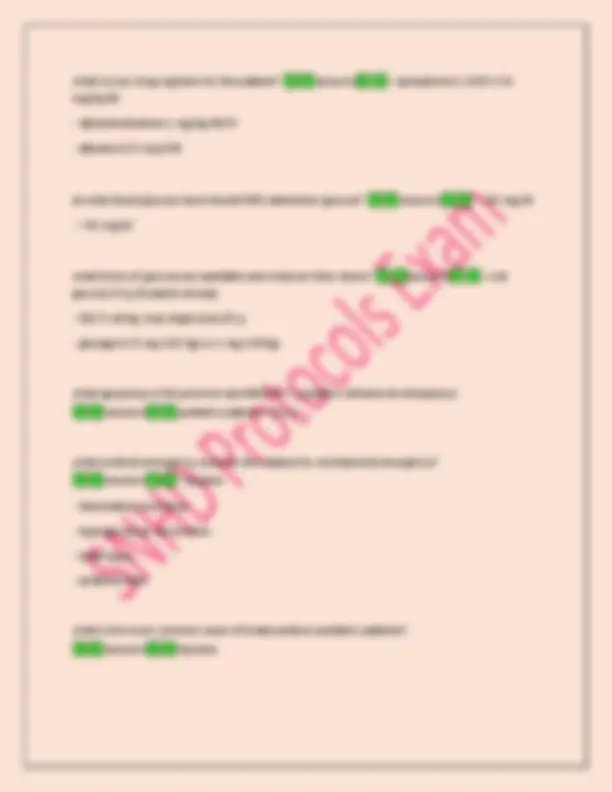
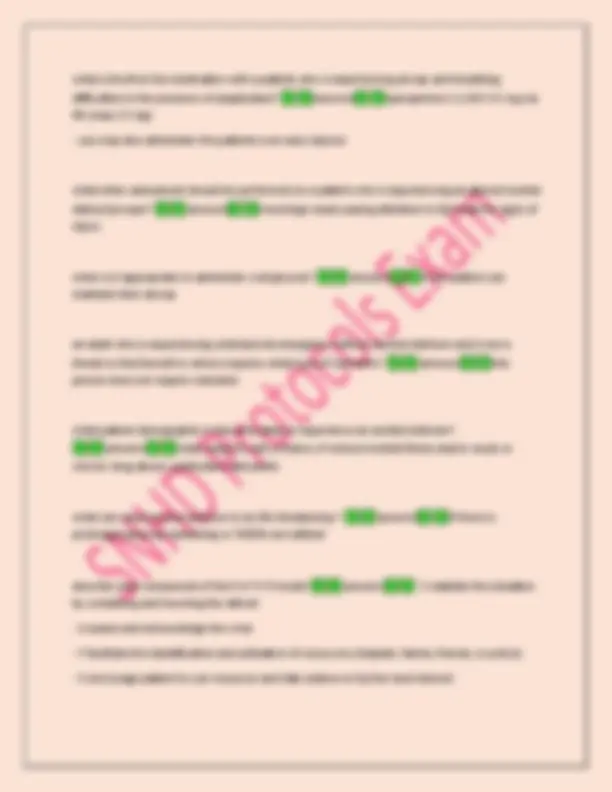
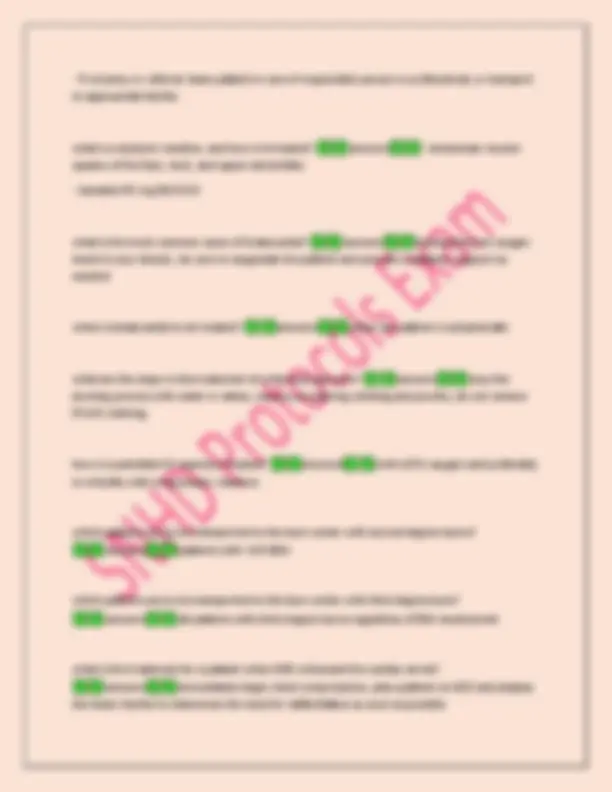
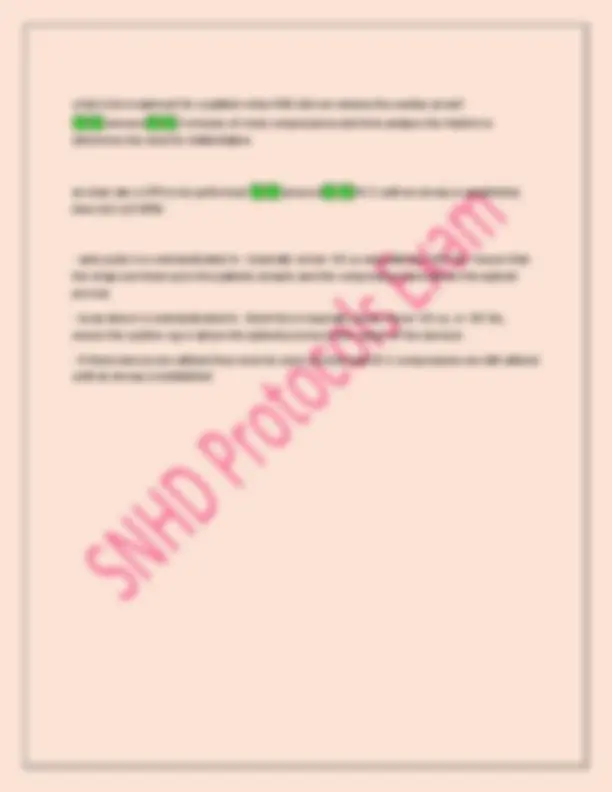


Study with the several resources on Docsity

Earn points by helping other students or get them with a premium plan


Prepare for your exams
Study with the several resources on Docsity

Earn points to download
Earn points by helping other students or get them with a premium plan
Community
Ask the community for help and clear up your study doubts
Discover the best universities in your country according to Docsity users
Free resources
Download our free guides on studying techniques, anxiety management strategies, and thesis advice from Docsity tutors
SNHD Protocols Exam QUESTIONS AND CORRECT ANSWERS| ACCURATE REAL EXAM WITH FREQUENTLY TESTED QUESTIONS|ALREADY A GRADED|GUARANTEED PASS|LATEST UPDATE 2025
Typology: Exams
1 / 15

This page cannot be seen from the preview
Don't miss anything!










what is the proper procedure for performing chest compressions on a pregnant woman? answers manual compression with manual displacement of the uterus to the left is recommended what is the dose of nitroglycerin to be administered for chest pain? answers 0.4 mg SL (EMT may assist with pt's own) , may repeat q5 min, x2 (can only be given 3 doses) what time frame must be considered when administering nitroglycerine in a patient who has taken erectile dysfunction medications? answers 48 hrs what steps are to be taken to perform a normal delivery? answers - puncture amniotic sac if not already
what is the treatment of a delivery with a breech presentation? answers supporting the body of the baby while supporting the head what is the treatment of a delivery with a cord presentation? answers - position patient in trendelenburg and slightly on left side
what is the fluid regimen for a patient with heat cramps? answers PO fluids as tolerated what rule should be followed when applying cold packs to a patient experiencing a heat related illness? answers do not place the cold pack directly onto the skin who is the most susceptible to heat related illnesses answers the very young and very old what are the signs of heat cramps answers - muscle cramping caused by dehydration
list the differential diagnoses for a patient with hyperkalemia answers - cardiac disease
90mmHg OR
what signs and symptoms should you be aware of with a smoke inhalation patient? answers - grunting expirations
what should the limitation be for your on scene time? answers 10 min why is a RACE score important? answers a RACE score > 5 indicated the patient may be having an ischemic stroke with LVO (large vessel occlusion) which facilities are stroke centers? answers all except North Vista which hospitals have NIR (near infrared radiation) capabilities? answers centennial hills, henderson, spring valley, st rose sienna, sunrise, UMC, valley what makes a tachycardic patient stable? answers normal mental status, palpable radial pulse what makes a tachycardic patient unstable? answers mental status changes, no palpable radial pulse what oxygen saturation percentage is to be maintained? answers > 94% or >90% for patients on home oxygen what basic maneuvers should be utilized in order to ensure proper ventilation? answers - chin lift/jaw thrust, NPA or OPS and suctioning as needed what is a secure airway? answers when the patient is receiving proper oxygenation and ventilation
what is your drug regimen for this patient? answers - epinephrine 1:1000 0. mg/kg IM
what is the most important treatment for a child who is bradycardic? answers oxygenation and ventilation at what age range should CPR be performed on a pediatric patient whose HR is <60? answers less than 8 years old what patients are to be transported to a burn center? answers - second degree burns >10% BSA
what is the first line medication with a patient who is experiencing airway and breathing difficulties in the presence of anaphylaxis? answers epinephrine 1:1,000 0.5 mg via IM (max 1.5 mg)